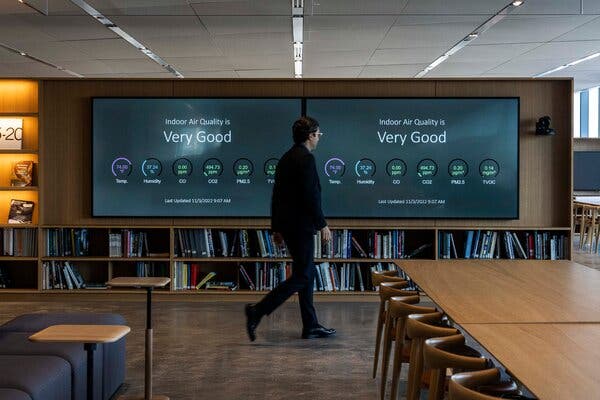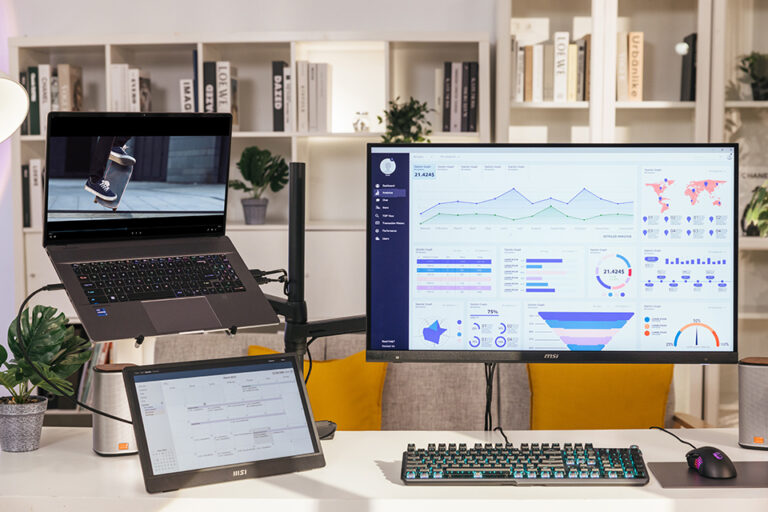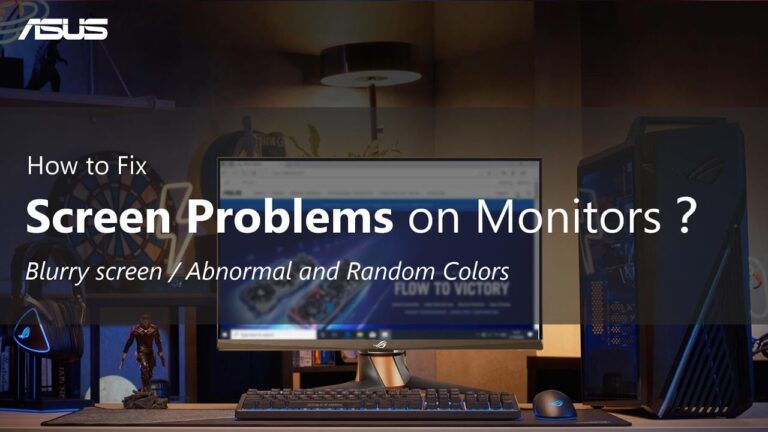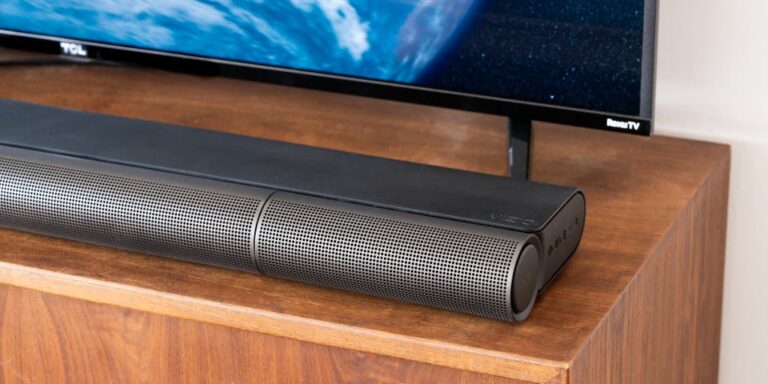Which Monitor is Not Good for Your Health? Find out the Risks and Hazards of Using the Wrong Display
Using a monitor that utilizes CRT and LCD technology is not good for your health. These monitors may cause eye strain, headaches, and other visual discomfort due to their lower refresh rates and the flickering effect they produce.
LED and OLED monitors are preferred as they are easier on the eyes, provide better viewing angles, and have higher brightness levels. Curved monitors also offer health benefits by reducing eye strain and improving productivity. Therefore, it’s important to choose monitors with LED, OLED, or curved display technology to prioritize your eye health.
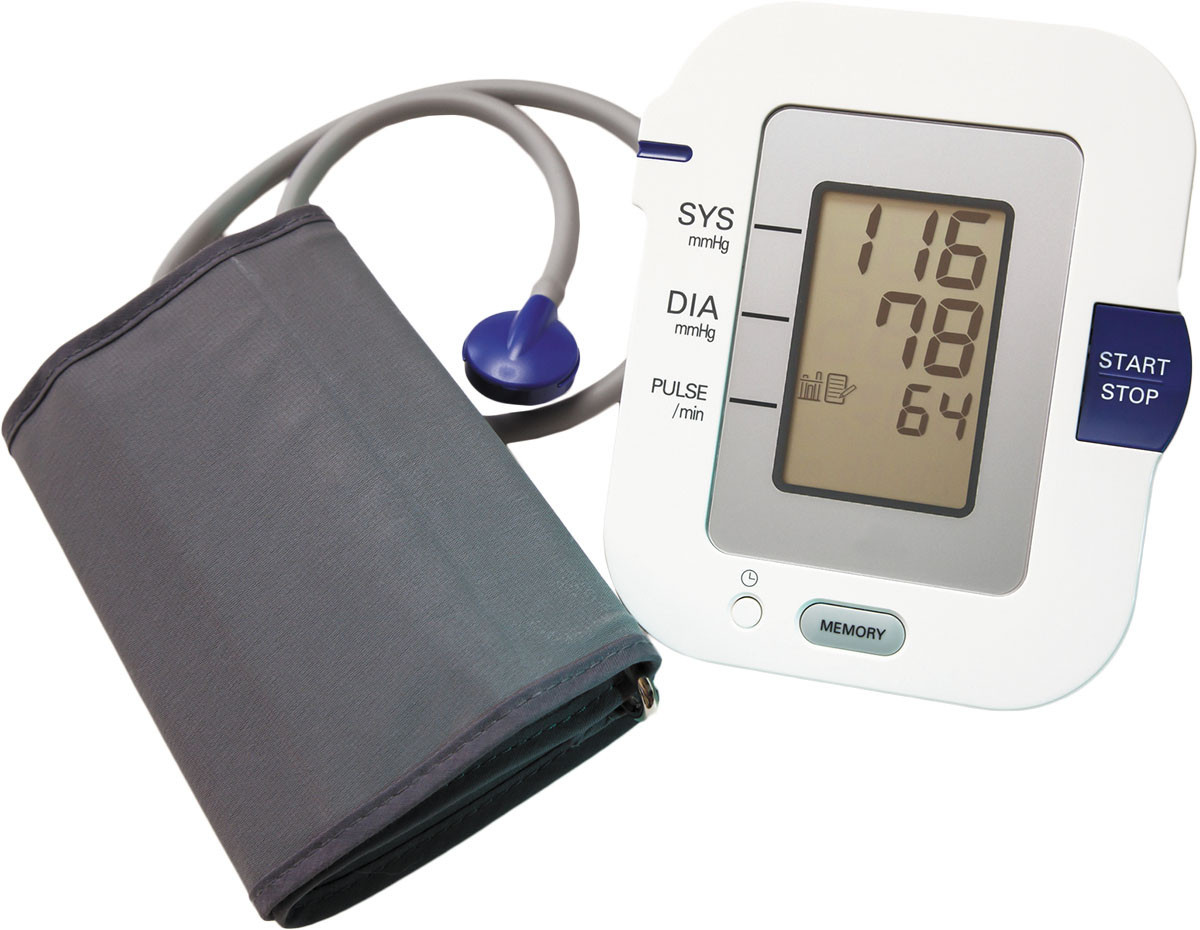
Credit: www.health.harvard.edu
Identifying Harmful Monitors
Excessive use of monitors, particularly smaller ones, can lead to eye strain and fatigue. To minimize these issues, it is recommended to look for monitors with IPS or VA panels, which offer better viewing angles, realistic colors, and improved overall quality.
at the types of monitors: CRT, LCD, LED, and OLED. Each type has its own risk factors and common health complaints associated with it. Understanding these factors can help you identify which monitor is not good for your health.Types Of Monitors: Crt, Lcd, Led, Oled
CRT (Cathode Ray Tube) monitors have been around for decades but they are not recommended for long-term use due to their bulky design and potential eye strain. These monitors use a tube to display images, and the constant flickering of the screen can cause headaches, eye fatigue, and even migraines. LCD (Liquid Crystal Display) monitors are much slimmer and widely used today. However, they still have some drawbacks. LCD monitors use fluorescent backlighting, which can emit blue light. Prolonged exposure to blue light can lead to digital eye strain, blurred vision, and disrupted sleep patterns. LED (Light-Emitting Diode) monitors are an improvement over LCDs as they use LED backlighting. LED technology allows for greater brightness control and reduces the risk of eye strain. However, LED monitors can still emit blue light, which may affect sleep quality and cause eye fatigue if used for an extended period. OLED (Organic Light-Emitting Diode) monitors are considered the most eye-friendly option. OLED technology eliminates the need for backlighting, resulting in deeper blacks, better contrast, and reduced eye strain. Since OLED monitors emit less blue light, they are less likely to cause digital eye strain or disrupt sleep patterns compared to other types.Risk Factors Associated With Each Type
– CRT monitors: Bulky design, flickering screens, and potential electromagnetic radiation emission. – LCD monitors: Blue light emission, especially from older models that use fluorescent backlighting. – LED monitors: Blue light emission, although to a lesser extent than LCDs. – OLED monitors: Minimal risk factors, as they emit less blue light and have better contrast ratios.Common Health Complaints Linked To Wrong Displays
1. Digital eye strain: Prolonged use of monitors with high blue light emission can cause eye fatigue, dryness, blurry vision, and eye discomfort. 2. Sleep disturbances: Exposure to blue light from monitors, especially at night, can disrupt circadian rhythms and potentially lead to insomnia or poor sleep quality. 3. Headaches and migraines: Flickering screens, high brightness levels, and prolonged exposure to screens can trigger headaches and migraines in susceptible individuals. 4. Posture-related issues: Prolonged sitting in front of monitors can contribute to poor posture, neck strain, and shoulder tension. When choosing a monitor, consider options that prioritize eye comfort and minimize blue light emission. Look for displays that incorporate technologies such as LED or OLED, as they are generally considered less harmful to your health. Remember to take breaks, adjust brightness levels, and practice good posture to further reduce the risk of health complaints associated with monitor use.Health Risks Of Using The Wrong Display
Using the wrong display monitor can pose health risks such as eye strain, headaches, and musculoskeletal problems. To prioritize your health, it is recommended to opt for LED or OLED monitors which are easier on the eyes and provide better viewing angles and color quality.
mend LED and OLED displays because they are generally easier on the eyes compared to CRT and LCD monitors. However, it is important to note that even with LED and OLED technology, there are still potential health risks associated with using the wrong display. In this section, we will discuss two major health risks: visual strain and blue light exposure, as well as ergonomic risks and posture issues.Visual Strain And Blue Light Exposure
Using the wrong display can lead to visual strain and exposure to harmful blue light. Blue light is emitted by electronic devices such as computers, smartphones, and tablets, and prolonged exposure can cause eye fatigue and discomfort. Additionally, excessive blue light exposure late at night can disrupt our sleep patterns. To reduce visual strain, it is important to choose a display with proper brightness and contrast settings. Adjusting the display settings to match the ambient lighting conditions can help reduce eye strain. Additionally, there are blue light filter applications and screen protectors available that can block or reduce the amount of blue light emitted by the display.Ergonomic Risks And Posture Issues
Another health risk associated with using the wrong display is ergonomic risks and posture issues. Prolonged use of a display that is not ergonomically designed can lead to musculoskeletal problems, headaches, tired eyes, and stress. To minimize these risks, it is important to position the display at eye level, ensuring that the top of the screen is level with or slightly below eye level. This helps promote a more neutral neck and shoulder position, reducing strain on these areas. Additionally, using an adjustable monitor stand or desk mount can provide flexibility in positioning the display at a comfortable height and angle. In addition to the display position, it is crucial to have an ergonomic workstation setup that includes proper desk height, chair ergonomics, and keyboard and mouse positioning. Maintaining good posture while using a computer and taking regular breaks to stretch and relax the muscles can also help prevent musculoskeletal problems. Remember, choosing the right display and ensuring an ergonomically sound workstation setup are crucial for maintaining your overall health and well-being. By addressing these health risks associated with using the wrong display, you can reduce visual strain, minimize blue light exposure, and prevent ergonomic issues and posture-related problems.Adverse Effects On Eyes And Body
Looking for a monitor that is not detrimental to your health? Consider IPS or VA panels, which offer better viewing angles, more realistic colors, and improved overall quality, minimizing eye strain and fatigue.
r monitors that use LED or OLED technology, as these are generally easier on the eyes compared to CRT and LCD monitors. LED and OLED technology allows for increased brightness while decreasing eye strain. Furthermore, it is important to consider the style of the monitor for your health. Curved monitors have been found to maximize productivity without sacrificing your well-being. Now let’s delve deeper into the adverse effects that monitors can have on our eyes and overall health.Symptoms Of Eye Fatigue And Discomfort
Extended exposure to monitors that are not eye-friendly can lead to symptoms of eye fatigue and discomfort. It is essential to be aware of these warning signs, as they can indicate the need for adjustments to prevent further damage. Symptoms of eye fatigue and discomfort may include:- Blurred or hazy vision
- Dry or watery eyes
- Itchy or irritated eyes
- Sensitivity to light
- Eye strain or pain
Connection To Headaches And Migraines
Monitors that are not suitable for our health can also contribute to headaches and migraines. Prolonged exposure to screens emitting excessive blue light or flickering can trigger these painful conditions. Studies have shown that blue light from digital screens can disrupt our natural sleep-wake cycle and cause eyestrain, headaches, and difficulty concentrating. To mitigate these effects, it is advisable to use monitors with blue light filters or consider using software applications that reduce blue light emissions. Taking regular breaks, practicing the 20-20-20 rule (looking at something 20 feet away every 20 minutes for 20 seconds), and ensuring proper screen positioning can also alleviate the risk of headaches and migraines.Influence On Sleep Patterns And Quality
The impact of monitors on our sleep patterns and quality should not be underestimated. The blue light emitted by monitors can suppress the secretion of melatonin, a hormone responsible for regulating sleep cycles. Exposure to blue light in the evening can disrupt our circadian rhythm, making it difficult to fall asleep and leading to poor sleep quality. This can have a cascade effect, impacting our overall health, cognitive function, and productivity during the day. To protect our sleep patterns and quality, it is recommended to limit screen time before bed, adjust monitor settings to reduce blue light emission, and consider using blue light-blocking glasses. Creating a sleep-friendly environment by dimming lights and keeping screens out of the bedroom can also contribute to better sleep hygiene. In conclusion, it is essential to choose monitors that prioritize our eye health and overall well-being. LED and OLED technology, in combination with ergonomic considerations, can reduce eye fatigue, discomfort, headaches, and sleep disturbances. By being proactive and implementing these strategies, we can create a healthier work or leisure environment while maximizing our productivity.Best Practices In Monitor Usage
Looking for a monitor that is less harmful to your eyes? Consider choosing a monitor with IPS or VA panels. These panels offer better viewing angles, more realistic colors, and improved overall quality, making them a healthier option for your eyes.
Avoid CRT and LCD monitors, and opt for LED or OLED technology instead.
Recommended Distance And Placement
When it comes to using a monitor, proper distance and placement play a crucial role in minimizing the strain on your eyes and ensuring optimal health. Here are some recommendations:
- Keep your monitor at an arm’s length away from your eyes to reduce eye fatigue and strain.
- Position the top of your monitor at or slightly below eye level to maintain a comfortable viewing angle.
- Place your monitor in a well-lit environment to avoid glare and reflections on the screen.
- Avoid positioning your monitor in a way that requires constant neck and head movement. Ensure that it is directly in front of you, with no tilting or bending required.
Importance Of Screen Size And Resolution
Screen size and resolution are important factors to consider when choosing a monitor that is not only good for your health but also enhances your overall experience. Here’s what you should know:
- Opt for a monitor with a larger screen size, as this helps reduce eye strain and enables clearer, more comfortable viewing.
- Choose a monitor with a higher resolution, such as a 1080p or 4K display, to ensure sharper images and text.
- Consider the aspect ratio of the monitor, with widescreen options providing a more immersive experience.
Adjusting Settings For Optimal Health
While selecting the right monitor is important, adjusting its settings can further enhance your health and well-being while using it. Here are some tips:
- Reduce the brightness of your monitor to a comfortable level. High brightness can strain your eyes, so finding the right balance is essential.
- Enable blue light filters or use software applications that minimize the amount of blue light emitted by your monitor. Blue light can disrupt sleep patterns and potentially impact eye health.
- Adjust the color temperature of your monitor to a warmer setting. This helps reduce eye strain and fatigue, especially during prolonged usage.
- Take regular breaks from staring at your monitor to rest your eyes and avoid excessive strain. Follow the 20-20-20 rule, which suggests looking at something 20 feet away for 20 seconds every 20 minutes.
By practicing these best practices in monitor usage, you can minimize the risk of eye strain, fatigue, and other related health issues. Prioritizing your health while using a monitor is essential for long-term well-being and productivity.
Risks And Hazards Of Poor Choices
Looking for the best monitor for your health? LED and OLED monitors are generally easier on the eyes compared to CRT and LCD monitors. Consider choosing a curved monitor, which maximizes productivity while minimizing health risks. Keep in mind that larger monitors are generally better for your eyes than smaller ones.
Specifics Of Non-ergonomic Designs
The design of your monitor plays a crucial role in determining its impact on your health. Non-ergonomic monitor designs can pose significant risks and hazards that can negatively affect your well-being. Without proper ergonomics, you run the risk of experiencing various health issues. Let’s take a closer look at the specifics of non-ergonomic designs:
- Inadequate adjustability: Non-ergonomic monitors often lack adjustable features such as height, tilt, and swivel. These limitations can result in poor posture and discomfort, leading to musculoskeletal problems.
- Poor display quality: Monitors that do not adhere to ergonomic standards may have subpar display quality, such as low resolution, flickering screens, or poor color accuracy. These visual deficiencies can strain your eyes and cause eye fatigue over time.
Models More Likely To Cause Eye Strain
Eye strain is a common issue associated with certain monitor models. The strain occurs when your eyes are exposed to prolonged periods of looking at a screen. While all monitors have the potential to cause eye strain, some models are more likely to contribute to this problem. Here are a few examples:
| Model Type | Risk of Eye Strain |
|---|---|
| CRT and LCD monitors | Higher risk due to lower refresh rates and potential for flickering screens |
| Smaller monitors | Increased risk due to smaller screens that require more eye movement |
It’s important to note that individual factors like screen brightness, viewing distance, and personal screen habits also contribute to eye strain. However, selecting a monitor that minimizes these risks can greatly help in preventing eye strain.
Consequences Of Ignoring Ergonomic Standards
Ignoring ergonomic standards when choosing a monitor can have severe consequences on your health. Failing to prioritize ergonomics can lead to long-term health problems that affect your productivity and overall well-being. Here are some consequences of ignoring ergonomic standards:
- Musculoskeletal issues: Poor monitor positioning and lack of adjustability can result in poor posture, strained muscles, and discomfort. This can lead to chronic conditions such as back pain, neck pain, and repetitive strain injuries.
- Eye-related problems: Non-ergonomic monitors can cause eye strain, fatigue, dryness, and even more serious conditions like Computer Vision Syndrome (CVS) or Digital Eye Strain (DES). These issues can affect your vision and reduce your visual comfort.
- Decreased productivity: Discomfort and health problems caused by non-ergonomic monitors can negatively impact your focus, concentration, and performance. It may lead to decreased productivity and increased absenteeism due to health-related concerns.
It is essential to prioritize ergonomics when choosing a monitor to minimize the risks and hazards associated with poor choices. By selecting a monitor that adheres to ergonomic standards, you can protect your health and optimize your productivity in the long run.
Safe And Health-conscious Options
Risks of using a monitor are eye strain, fatigue, and discomfort due to prolonged exposure to blue light. To minimize these risks, it is recommended to choose monitors with IPS or VA panels, which offer better viewing angles, realistic colors, and improved overall display quality.
Which Monitor is Not Good for Your Health: Safe and Health-Conscious Options Choosing the right monitor for your computer setup is essential for ensuring your long-term health and well-being. With the dizzying array of options available on the market today, it’s crucial to know what to look for in a monitor that prioritizes eye health and overall user wellness. By understanding the characteristics of eye-friendly monitors, being able to spot health-centric features, and tailoring your choice to individual needs, you can confidently select a monitor that is both safe and health-conscious.Characteristics Of Eye-friendly Monitors
When it comes to eye-friendly monitors, there are several key characteristics to take into consideration. These characteristics can help minimize eye strain, reduce the risk of eye fatigue, and promote overall eye health. Some important characteristics to look for include:- Adjustable brightness levels: Opt for a monitor that allows you to adjust the brightness level according to your surroundings and personal preference. This can help prevent excessive eye strain caused by overly bright or dim displays.
- Low blue light emission: Blue light emitted by computer screens can disrupt your sleep-wake cycle and potentially harm your eyes. Look for monitors that offer blue light filters or technologies specifically designed to reduce blue light emission.
- Flicker-free technology: Traditional monitors with flickering screens can contribute to eye fatigue and headaches. Choosing a monitor with flicker-free technology can help eliminate these issues and provide a more comfortable viewing experience.
- High resolution and pixel density: Monitors with high resolution and pixel density offer crisper and clearer images, reducing the strain on your eyes as you work or enjoy multimedia content.
How To Spot Health-centric Features
Identifying health-centric features in monitors can be a daunting task, especially with the wide range of options available. However, keeping an eye out for certain features can help guide your decision-making process. Some indicators of health-centric monitors include:- Blue light reduction technology: Look for monitors that explicitly mention blue light reduction or have dedicated settings to minimize blue light emission. This can help protect your eyes from potential long-term damage.
- Ergonomic design and adjustability: Opt for monitors that offer ergonomic features such as height adjustment, tilt, and swivel options. These adjustments can help you find a comfortable viewing position, reducing strain on your neck, shoulders, and eyes.
- Eye care certifications: Look for monitors that are certified by reputable organizations for eye care, such as TÜV Rheinland or Flicker-Free Certification. These certifications ensure that the monitors adhere to strict guidelines for minimizing eye strain and promoting eye health.
- Anti-glare or matte screens: Monitors with anti-glare or matte screens can significantly reduce reflections and glare, making it easier on your eyes, especially in brightly lit environments.
Tailoring The Choice To Individual Needs
Every individual has unique preferences and requirements when it comes to selecting a monitor. To ensure that you choose the most suitable monitor for your needs, consider the following factors:- Work requirements: Determine the specific tasks you will be using the monitor for. If you spend long hours working on detailed design projects or editing videos, a monitor with high resolution and color accuracy might be a priority.
- Space constraints: Consider the dimensions of your workspace and the available desk or wall mount options. Opting for a monitor with a smaller footprint or VESA mount compatibility can help you maximize your workspace.
- Budget considerations: Set a budget range and look for monitors that offer a good balance of eye-friendly features without breaking the bank. Remember that investing in your long-term health is equally essential.
Frequently Asked Questions For Which Monitor Is Not Good For Your Health
Which Monitor Is Less Harmful For Eyes?
LED and OLED monitors are generally less harmful for the eyes compared to CRT and LCD monitors. When choosing a monitor, look for IPS or VA panels, as they provide better viewing angles, realistic colors, and improved overall quality. Avoid using oversized monitors and ensure that the monitor is placed in an appropriate position to reduce eye strain and other health risks.
What Are The Risks Of Using A Monitor?
Using a monitor can pose several risks, including eye strain, eye irritation, headaches, blurred vision, glare sensitivity, and neck, shoulder, and back pain. It can also lead to repetitive strain injuries and reproductive hazards due to radiation exposure. It is important to be aware of these risks and take measures to minimize them, such as using monitors with IPS or VA panels.
How Do You Know Your Monitor Is Bad?
Signs of a bad monitor include flickering screen, distorted or blurry images, color inaccuracies, black spots or dead pixels, and difficulty adjusting brightness or contrast. Additionally, if you experience eye strain, headaches, or fatigue after using your monitor, it may be a sign that it is not suitable for your health.
Does My Monitor Have Radiation?
LED and OLED monitors are generally preferred over CRT and LCD monitors for being easier on the eyes and reducing eye strain. Curved monitors can also maximize productivity without sacrificing health. Using a suitable monitor position and reducing exposure to glare can help minimize health risks.
Blue light from electronic devices does not significantly increase the risk of eye damage. Look for IPS or VA panels for less eye strain and better overall quality. Common risks of using a monitor include eye strain, irritation, headache, blurred vision, and pain in the neck and back.
Conclusion
To ensure the health of your eyes, it is advisable to choose a monitor with IPS or VA panels. These panels have better viewing angles, realistic colors, and improved overall quality. Using a monitor with these features can reduce the risk of eye strain, eye fatigue, and other related issues such as headaches and blurred vision.
It is important to prioritize your health when selecting a monitor for your workstation.
